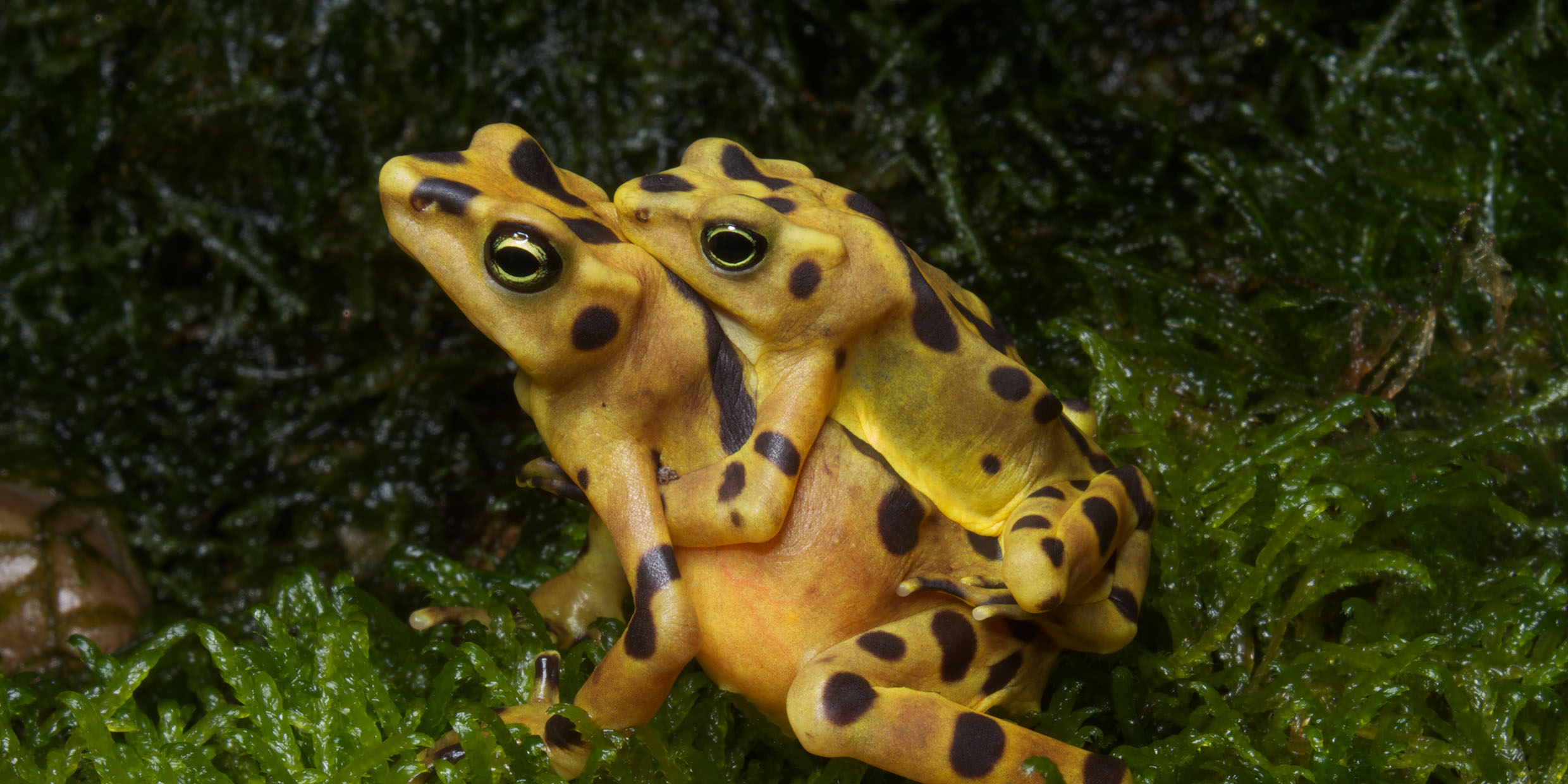Originally published 14 February 1994
“Ah, women. What do they want?” asks GQ magazine on the cover of the February [1994] issue. The question has been on male minds at least since Valentine’s Day, one million B.C.
Women seem less uncertain about what men want, but they are no happier for it.
Pleasing one’s Valentine while at the same time pleasing one’s self has always presented something of a conundrum. The selective pressure of evolution has generally worked to ensure the survival of an individual’s genes. According to biologists, males and females have perfected their reproductive strategies separately. Mutual bliss never had much to do with it.
Still, one turns to the natural history books for lessons in love. As Cole Porter said, birds do it, bees do it, even educated fleas do it; surely we can learn from each other. Alas, evolution has not thrown up many examples of creatures less romantically befuddled than ourselves.
Male three-wattled bellbirds of Costa Rica attract females to their perch in a tree with a voluminous call that has been described as a “metallic clanging bong.” It is apparently effective. However, when a female settles down beside a male, her feathers aquiver and ready for love, she is treated to a final “bong” so loud that she is literally blown off the limb. She must surely wonder, “What do guys want?”
One thing human females seem to want is more languorous lovemaking. The male’s preference for the quickie has been a perennial source of complaint by women. But there can be a downside to protracted copulation. The male Swedish seed bug hangs on to his partner for 24 hours. The purpose, apparently, is to keep other males from mating with her until her eggs have been fertilized by his sperm.
For much the same reason, Atelopus frogs remain clamped in copula for six months. The poor male, besotted with possessiveness, meanwhile wastes away. It’s no bed of roses for the female either, but a quickie it’s not.
Some women’s magazine recently wrote about the male “third-date” rule. Apparently, taking a woman out three times is now considered an adequate prelude to sex (back when I was dating we lived by a “third-year” rule). Women, according to the magazine, are inclined to be more patient than guys, but the third-date rule seems to be some sort of compromise between his “right now” and her “sooner-or-later.”
In nature, right now appears to be closer to the rule. The female hangingfly is considered coy by entomologists because she makes her suitor wait a full five minutes. The male hangingfly initiates the courtship by presenting his sweetheart with a gift of food, the insect equivalent of the Valentine’s box of chocolates. She makes him wait while she nibbles, presumably smiling sweetly while he shuffles uncomfortably on all six of his feet.
Women complain too that men aren’t sufficiently monogamous. Would they envy then the thoroughly monogamous male anglerfish, a species that lives in the ocean depths? A female anglerfish attracts a male that bites her, permanently, never letting go. She swims and eats and goes about her business with her clamp-jawed paramour attached. Gradually, their circulation systems join and he takes all his food and oxygen from her. When she ejects her eggs into the water, he is reliably there to spew them with sperm. By this time, she has grown several thousand times larger than he — a tiny, utterly faithful appendage to her body.
You might think hermaphroditic creatures have found the answer to mutual bliss between the sexes. Hermaphrodites have both male and female reproductive apparatus, a sure-fire way, presumably, to understand what the other side wants. Normally, hermaphrodites reciprocate when mating: I’ll fertilize your eggs, you fertilize mine. Sounds very amiable. But hermaphroditic land snails come equipped with wicked daggers on their foot, called “love darts,” with which they engage in vicious foreplay. Bliss it’s not.
If hermaphrodites don’t know what the other half wants, then what hope for the rest of us? Just look at the magazine covers on the newsstand: “What makes men tick?” “Why are women so angry?” “Can guys and gals really get along?” You’d think after a few million years we’d have figured some of this out.
For all our overlay of consciousness and culture, we still carry around a mess of male and female genes that have evolved out of pure self-interest — and which we try to keep in check with Valentine’s offerings. After 36 years, my spouse says she still doesn’t know what I want. I’m not sure I know myself. In any case, we are no worse off than the birds, bees, and educated fleas; they don’t know either.



